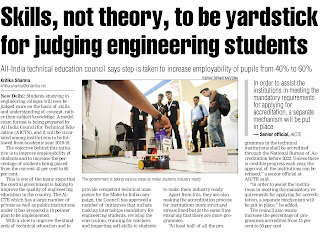Meet
the youngest girl to conquer Everest and whose life inspired the Rahul
Bose-directed film,Poorna
In May 2014, Poorna Malavath, just a month shy of her
fourteenth birthday, created history by becoming the youngest female in the
world to scale Mount Everest.
Gearing up for the release of the biopic,Poorna , Malavath discusses her inspirational
journey, the difficulties she faced during the expedition and what kept her
going.
How does it feel having a movie made that tells your
story?
I’m so happy. It’s about my story and so many people
will be inspired by it. And I’m going to see my life story on screen so I’m
very excited.
Was climbing Everest a lifelong dream?
No, it wasn’t a lifelong dream. I got the opportunity
from the social welfare school and R.S. Praveen Kumar sir. There was a
selection process, and I started in Bhongir Rock Climbing School. A total of
110 students participated in that, and out of those, 20 were selected for the
next phase of training, and finally, two of us were selected.
What kind of training did you undergo and how long did
you train for?
I trained for 8 months. The first three months was
mainly jogging exercises, yoga and meditation. Then there was ice and snow
training, and rock climbing.
Which other peaks did you climb before Everest?
Mount Renock in Sikkim.
Was your family supportive?
Right from childhood, they’ve always encouraged me a
lot. But I’m their only daughter so they were scared that something might
happen, my mother cried before I left.
Before you set off on your expedition, Anand ( her
co-climber) and you received news that there was an avalanche on the Nepalese
side and 17 Sherpas died. Did that scare you at all or make you want to go
back?
I wasn’t scared, but Praveen sir called and asked us
to come back because there might be a problem. But we never give up so there
was no question of going back.
Was there any piece of advice that Praveen sir offered
that stayed with you?
He is my role model and I got this opportunity because
of him. He gave the name Swaeroes to the social welfare school students, like
Poorna Swaeroe. ‘SW’ stands for ‘Social Welfare’ and ‘Aeroes’ for us means ‘sky
is the limit’. We have ten commandments in our school, and for Anand annayya (brother) and
me, the ten commandments were like a prayer during the expedition.
What did you take with you when you went up?
I took the National flag, the Telangana flag, my
school society’s flag (Andhra Pradesh Social Welfare Residential Educational
Institutions Society), Ambedkar’s photo, and S.R. Shankaran’s (former IAS
officer who established the social welfare schools) photo. And we took oxygen
tanks from the base camp.
What about food?
We carried snacks and we got south Indian food at the
base camp. But when we went up, we had to eat packaged food like biryani and I
don’t like biryani. We were vomiting because the food didn’t sit well with us
so I managed with chocolates, dry fruits, and liquids.
During the expedition, did you come across anything
you weren’t prepared for, anything that scared you?
Around Mt. Everest there were only mighty mountains.
But when I was coming back down, I saw six dead bodies and my legs shivered. I
had already summited and I was coming back, but I still thought that maybe that
could have happened to me.
What was the first thing that went through your mind
when you reached the top?
When I reached the top, I was really happy because I
fulfilled the dream of Praveen Kumar sir and I proved that girls can do
anything. And I hoisted the flags.
When did you contact your family to let them know you
had made it?
I called sir from a satellite phone when I reached the
top and I called my parents when I came to the base camp. They were very happy
that I was safe and that I had succeeded.
What are your plans for the future? Any more peaks you
want to scale?
I climbed Kilimanjaro last year on August 15. I’m
planning on climbing again, but haven’t decided which mountain it will be. But
my life goal is to become an IPS officer.
Do you have any words of advice for all the young
girls who might read this interview?
We get very few opportunities, so when you do get an
opportunity you must utilise it. A lot of people will keep telling you that
‘you can’t do this, you can’t do that,’ but we can do everything because we are
born winners and anything is possible.
When I reached the top, I was really
happy because I fulfilled the dream and I proved that girls can do anything.
Source: THE HINDU-30th March,2017




.jpg)